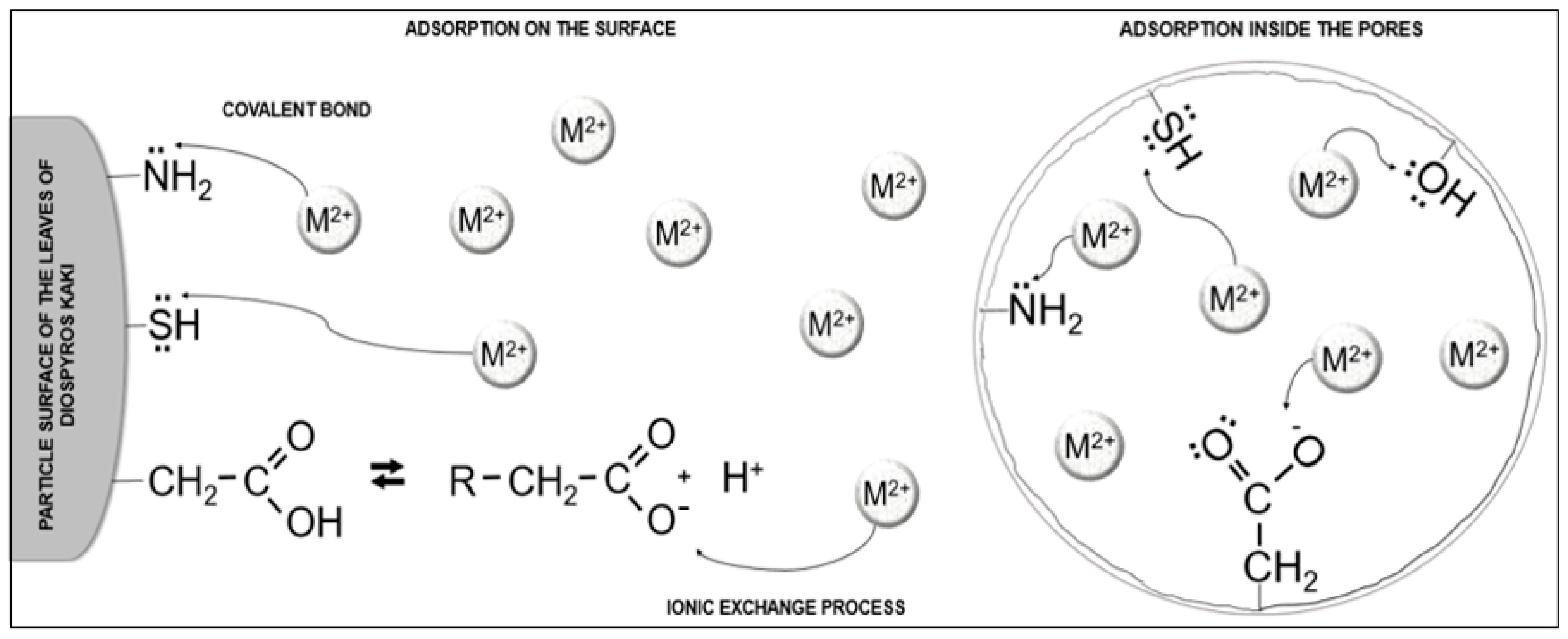Application of the biomass of leaves of Diospyros kaki L.f. (Ebenaceae) in the removal of metal ions from aqueous media.
GALERA, Rodrigo Martorelli; SILVA, Adrielli Cristina Peres da; JORGETTO, Alexandre de Oliveira; WONDRACEK, Marcos Henrique Pereira; SAEKI, Margarida Juri; SCHNEIDER, José Fabian; PEDROSA, Valber de Albuquerque; MARTINES, Marco Antonio Utrera; CASTRO, Gustavo Rocha de.
GALERA, Rodrigo Martorelli; SILVA, Adrielli Cristina Peres da; JORGETTO, Alexandre de Oliveira; WONDRACEK, Marcos Henrique Pereira; SAEKI, Margarida Juri; SCHNEIDER, José Fabian; PEDROSA, Valber de Albuquerque; MARTINES, Marco Antonio Utrera; CASTRO, Gustavo Rocha de.




 Abstract: Using straightforward and cost-effective methods, persimmon leaves were converted into high-quality powder. This powder was applied as an adsorbent for the removal of Cu(II) and Cd(II) from aqueous solutions. Scanning electron microscopy (SEM) revealed the presence of particles with non-homogeneous sizes and rough textures. The biosorbent exhibited a specific surface area of approximately 0.44 ± 0.015 m 2 g -1. Elemental analysis and energy-dispersive X-ray spectroscopy (EDX) confirmed the presence of elements such as sulfur, phosphorus, nitrogen, and oxygen. The results of 13C nuclear magnetic resonance (13C-NMR), obtained using the cross-polarization technique, show the presence of groups containing sulfur and oxygen. Infrared spectroscopy (FTIR) indicated the existence of amine and hydroxyl groups. The material was used in the solid-phase extraction of Cu(II) and Cd(II) in batch experiments, and its adsorption capacity was evaluated as a function of time, pH, and analyte concentration. The fraction with a diameter between 63 and 106 µm was selected for the adsorption tests. Kinetic equilibrium was reached within 5 min, and the experimental data were fitted to the pseudo-second-order kinetic model. The optimum pH for the adsorption of both metal species was approximately 5.0. The adsorption isotherms were adjusted using the modified Langmuir equation, and the maximum amount of metal species extracted from the solution was determined to be 0.213 mmol g-1 for Cu(II) and 0.215 mmol g-1 for Cd(II), with high linear correlation coefficients for both metals. Persimmon leaves are typically abundant during the growing season, and because they are seasonal, the Diospyros kaki L.f. tree undergoes the natural process of leaf abscission, ensuring the availability of le
Abstract: Using straightforward and cost-effective methods, persimmon leaves were converted into high-quality powder. This powder was applied as an adsorbent for the removal of Cu(II) and Cd(II) from aqueous solutions. Scanning electron microscopy (SEM) revealed the presence of particles with non-homogeneous sizes and rough textures. The biosorbent exhibited a specific surface area of approximately 0.44 ± 0.015 m 2 g -1. Elemental analysis and energy-dispersive X-ray spectroscopy (EDX) confirmed the presence of elements such as sulfur, phosphorus, nitrogen, and oxygen. The results of 13C nuclear magnetic resonance (13C-NMR), obtained using the cross-polarization technique, show the presence of groups containing sulfur and oxygen. Infrared spectroscopy (FTIR) indicated the existence of amine and hydroxyl groups. The material was used in the solid-phase extraction of Cu(II) and Cd(II) in batch experiments, and its adsorption capacity was evaluated as a function of time, pH, and analyte concentration. The fraction with a diameter between 63 and 106 µm was selected for the adsorption tests. Kinetic equilibrium was reached within 5 min, and the experimental data were fitted to the pseudo-second-order kinetic model. The optimum pH for the adsorption of both metal species was approximately 5.0. The adsorption isotherms were adjusted using the modified Langmuir equation, and the maximum amount of metal species extracted from the solution was determined to be 0.213 mmol g-1 for Cu(II) and 0.215 mmol g-1 for Cd(II), with high linear correlation coefficients for both metals. Persimmon leaves are typically abundant during the growing season, and because they are seasonal, the Diospyros kaki L.f. tree undergoes the natural process of leaf abscission, ensuring the availability of le @article={003182606,author = {GALERA, Rodrigo Martorelli; SILVA, Adrielli Cristina Peres da; JORGETTO, Alexandre de Oliveira; WONDRACEK, Marcos Henrique Pereira; SAEKI, Margarida Juri; SCHNEIDER, José Fabian; PEDROSA, Valber de Albuquerque; MARTINES, Marco Antonio Utrera; CASTRO, Gustavo Rocha de.},title={Application of the biomass of leaves of Diospyros kaki L.f. (Ebenaceae) in the removal of metal ions from aqueous media},journal={Separations},note={v. 11, n. 1, p. 12-1-12-18},year={2024}}
@article={003182606,author = {GALERA, Rodrigo Martorelli; SILVA, Adrielli Cristina Peres da; JORGETTO, Alexandre de Oliveira; WONDRACEK, Marcos Henrique Pereira; SAEKI, Margarida Juri; SCHNEIDER, José Fabian; PEDROSA, Valber de Albuquerque; MARTINES, Marco Antonio Utrera; CASTRO, Gustavo Rocha de.},title={Application of the biomass of leaves of Diospyros kaki L.f. (Ebenaceae) in the removal of metal ions from aqueous media},journal={Separations},note={v. 11, n. 1, p. 12-1-12-18},year={2024}}